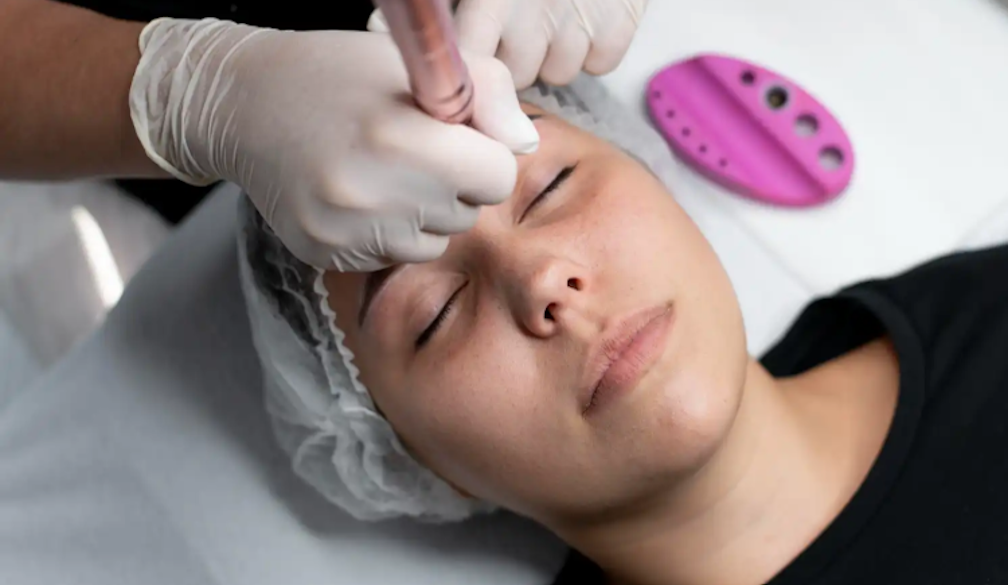Can Skin Needling Help With Acne Scars and Pigmentation?

Acne scars and pigmentation are two of the most common skin concerns in Hobart. Whether left behind after teenage breakouts or developed later due to hormonal shifts and sun exposure, uneven skin tone and texture can affect confidence. While there are many treatments available, skin needling has gained attention for its ability to improve both concerns using the body’s repair process.
Skin needling, also called microneedling, works by triggering controlled micro-injuries in the skin using fine, sterile needles. These tiny channels prompt the skin to repair itself by increasing the production of collagen and elastin. As the tissue heals, the surface becomes smoother, and discolouration begins to fade. This process, called collagen remodelling, gradually replaces scarred and pigmented areas with stronger, more even-toned skin.
Over time, this collagen renewal helps soften the appearance of indented acne scars. Fibrous tissue that pulls the skin inward is broken down, and fresh collagen fills the area, improving depth and blending edges. For pigmentation, the increased cell turnover lifts discoloured skin and encourages uniformity without the heat or abrasion of other treatments.
In Hobart, clients often choose microneedling for acne scars because it works without harsh chemicals or aggressive resurfacing. It is suitable for most skin types and can be customised based on scarring severity, skin thickness, and comfort level. With each session, the skin continues to rebuild, creating lasting improvement that feels like your own skin—just smoother, clearer, and more even.
Skin Tone and Pigment Safety
Pigmentation concerns are often more difficult to treat than scarring because they vary widely between skin types. People with fair skin may develop freckles or sunspots. Those with deeper skin tones may experience post-inflammatory hyperpigmentation, where dark patches linger long after a breakout or injury. Treating pigment safely requires a method that works beneath the surface without irritation.
Microneedling is often considered safer than treatments like laser for clients with medium to dark Fitzpatrick skin types. Lasers target pigment using heat, which can sometimes cause rebound pigmentation or lightening in darker skin. Microneedling uses no heat and instead relies on physical stimulation, making it a lower-risk option for uneven tone.
By improving the skin barrier and promoting healthy cell turnover, skin needling helps pigment fade stably and gradually. This is ideal for patients with melasma, sunspots, and post-acne marks. It also reduces the chance of irritation and inflammation, which are common triggers for more pigment problems.
What Results Can You Expect and When?
Microneedling works best as a course of treatment. Most clients in Hobart see results after three sessions, with noticeable changes in texture, tone, and scar depth. The skin becomes brighter and firmer after each appointment, with long-term results continuing to develop over the next several months.
Improvements in acne scars take time because collagen builds slowly. You may notice softening and smoothing after the first session, but the biggest change comes after consistent treatments spaced four to six weeks apart. Most people complete three to six sessions depending on the severity of scarring or pigment.
Pigmentation responds faster than texture. Many clients see visible fading of dark spots within two treatments, especially when combined with active skincare products between sessions. Results also depend on sun protection, lifestyle, and overall skin health. Wearing sunscreen daily helps preserve progress and prevents new pigment from forming.
Before treatment, your skin will be assessed to ensure it’s ready. Any inflammation, infections, or breakouts need to be cleared first. After treatment, the skin may be red and slightly swollen for twenty-four to forty-eight hours. As it heals, you’ll see smoother skin with a clearer, more even appearance. The final result is natural and subtle but clearly noticeable.
What Products Help Maximise Results?
To support results between treatments, your nurse or therapist may recommend skincare products that improve healing and encourage collagen formation. These can be applied after treatment once the skin barrier has started to recover.
Growth factor serums are often used immediately after micro needling. These serums deliver proteins that help cells repair and regenerate more efficiently. They also reduce redness and support smoother recovery.
Vitamin C serums are introduced a few days after the procedure to brighten skin and reduce remaining pigmentation. Hyaluronic acid is used for deep hydration and barrier repair. To prevent irritation, avoid retinoids and acids for at least a week. All products should be fragrance-free and medical grade to ensure safety on healing skin.
Supporting the skin with the right ingredients helps each micro needling session work better. It also improves the skin’s natural resilience and glow between appointments.
Comparison to Other Scar Treatments
Microneedling is often compared to chemical peels, laser therapy, and platelet-rich plasma treatments. Each has benefits and may be recommended depending on the condition of your skin and your goals.
Chemical peels work by removing the outer layer of skin using acids. They can be effective for surface-level pigmentation and fine lines but are not ideal for deep acne scars. Peels can also irritate and require downtime, particularly for medium-depth options.
Laser resurfacing is more aggressive. It vaporises the skin’s surface and triggers collagen production through heat. While results can be dramatic, the risk of post-treatment complications is higher, especially in darker skin tones. Lasers also come with longer downtime and higher costs.
PRP, or platelet-rich plasma, involves injecting or applying a concentrated portion of your own blood to stimulate healing. While promising, its results vary, and it is often used alongside micro needling rather than as a standalone treatment.
Micro needling balances safety, results, and comfort. It works deeper than peels, with less heat risk than lasers, and often shows better consistency than PRP. For many people in Hobart, it’s the preferred option for acne scars and pigmentation because it can be repeated, adjusted, and combined with targeted skincare.
Start Your Skin Needling Journey
If you're struggling with acne scarring or pigmentation and want a gentle but effective treatment, microneedling could be the right choice. With consistent sessions, safe techniques, and the right aftercare, your skin can look smoother, brighter, and more balanced.
At Heart Aesthetics Hobart, treatments are designed around your unique skin type and goals. Nurse-led care ensures safety, experience, and results you can trust. Every face tells a different story, and your plan should be as individual as you are. Start your skin needling journey with a consultation and take the first step toward clearer, more confident skin.

